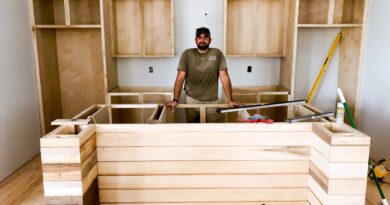Convenient Practice: Mastering Your Sport at Home
Practicing your sport regularly is essential for mastering it, but finding the time and space to train can be challenging. Fortunately, home workouts and athletic training have evolved, making it easier than ever to refine your skills within the comfort of your living room. This blog post will explore how athletes and fitness enthusiasts can effectively practice their sport at home, offering valuable tips, practical examples, and insights into the best equipment to enhance your training.
The Rise of Home Sports Training
In recent years, the trend of practicing sports at home has gained significant momentum. This shift was further accelerated by the global pandemic, which forced many athletes to find creative ways to maintain their training routines. From professional athletes to weekend warriors, the convenience of home workouts has become an integral part of their fitness regimen.
Why Home Training?
Home training offers several advantages. First, it eliminates the need for commuting to a gym or sports facility, saving you precious time. Second, it allows for a more flexible schedule, enabling you to train whenever it suits you best. Lastly, it provides a private space where you can focus on your goals without the distractions of a crowded gym.
Setting Up Your Home Training Space
Creating an effective home training environment is crucial for maximizing your practice sessions. Here are some key steps to consider when setting up your home workout area.

Choose the Right Space
Selecting the right space for your home training is vital. Ideally, you should choose a room with enough space to move around comfortably. If possible, opt for an area with natural light and good ventilation. A spare bedroom, basement, or even a corner of your living room can work well.
Gather Essential Equipment
Investing in the right equipment can significantly enhance your home training experience. Depending on your sport, you may need specific gear to replicate the conditions of a gym or sports facility. For example, if you’re a golfer, investing in the golf simulator for home use can help you practice your swing and improve your game.
Create a Motivating Atmosphere
A motivating atmosphere can make a huge difference in your training sessions. Consider adding motivational posters, a mirror to check your form, and a sound system to play your favorite workout tunes. Having a dedicated space that inspires you can boost your motivation and consistency.

Sport-Specific Home Training Tips
Each sport has unique training requirements. Here are some tailored tips for practicing different sports at home.
Golf
Golf is a sport that requires precision and technique. Practicing your swing at home can be highly beneficial, especially with the right tools. Using the best golf simulator for home can provide realistic feedback and help you fine-tune your skills. Additionally, you can practice putting on a carpet or invest in a putting mat.
Basketball
Basketball players can work on their dribbling skills and shooting accuracy at home. Dribbling drills using a basketball and resistance bands can improve ball control. If you have space, consider installing a basketball hoop in your driveway or backyard. Practicing free throws and layups can enhance your scoring abilities.
Tennis
Tennis players can benefit from practicing their strokes and footwork at home. Using a rebound net or wall can help you practice your forehand and backhand shots. Footwork drills, such as ladder drills and cone drills, can improve your agility and speed on the court.
The Role of Technology in Home Training
Technology has revolutionized home sports training, providing athletes with advanced tools to enhance their performance. Here are some technological advancements that can take your home training to the next level.
Virtual Coaching
Virtual coaching has become increasingly popular, allowing athletes to receive personalized training programs and feedback from professional coaches. Platforms like Zoom and Skype enable real-time communication, making it easy to connect with experts from around the world.
Wearable Fitness Trackers
Wearable fitness trackers provide valuable data on your performance, helping you monitor your progress and identify areas for improvement. Devices like smartwatches and fitness bands can track your heart rate, calories burned, and even specific metrics related to your sport.
AI-Powered Training Apps
AI-powered training apps offer customized workout plans based on your goals and performance. These apps use algorithms to adapt your training program, ensuring you get the most out of each session. Examples include the Nike Training Club app and MyFitnessPal.
Staying Motivated and Consistent
Consistency is key to mastering any sport. Here are some tips to stay motivated and maintain a regular training schedule.
Set Clear Goals
Setting clear, achievable goals can keep you focused and motivated. Whether it’s improving your golf swing or increasing your basketball free throw percentage, having specific targets can drive your training efforts.
Track Your Progress
Tracking your progress helps you see how far you’ve come and identify areas for improvement. Use a journal or a fitness app to record your workouts, noting any milestones or achievements along the way.
Join Online Communities
Joining online communities of like-minded athletes can provide support and encouragement. Platforms like Reddit, Facebook groups, and fitness forums offer a space to share experiences, seek advice, and celebrate successes.
Incorporating Flexibility and Recovery
Flexibility and recovery are essential components of any training regimen. Here are some tips to ensure you’re incorporating these elements into your home workouts.
Stretching and Mobility Exercises
Incorporating stretching and mobility exercises into your routine can prevent injuries and improve your overall performance. Yoga, Pilates, and dynamic stretching are excellent options for enhancing flexibility.
Foam Rolling and Massage
Foam rolling and self-massage techniques can aid in muscle recovery and reduce soreness. Investing in a foam roller or massage gun can make a significant difference in your post-workout recovery.
Rest and Sleep
Rest and sleep are crucial for your body to recover and adapt to training. Ensure you’re getting adequate sleep each night and take rest days as needed to prevent burnout and overtraining.
Balancing Home Training with Outdoor Activities
While home training is convenient, it’s essential to balance it with outdoor activities to ensure a well-rounded fitness routine.
Outdoor Running and Cycling
Running and cycling are excellent ways to enjoy the outdoors while improving your cardiovascular fitness. Incorporate outdoor runs or bike rides into your weekly routine to complement your home workouts.
Playing Your Sport Outdoors
Whenever possible, take your sport training outdoors. Playing basketball at a local court, practicing tennis at a nearby park, or hitting golf balls at a driving range can provide a change of scenery and fresh air.
Hiking and Nature Walks
Hiking and nature walks are fantastic ways to stay active while enjoying the beauty of nature. These activities can also serve as a form of active recovery, helping you relax and recharge.
The Importance of Nutrition in Home Training
Proper nutrition plays a vital role in your training and overall performance. Here are some tips to fuel your body for success.
Balanced Diet
A balanced diet rich in whole foods provides the nutrients your body needs to perform at its best. Focus on consuming a variety of fruits, vegetables, lean proteins, and healthy fats.
Hydration
Staying hydrated is crucial for maintaining energy levels and preventing dehydration. Aim to drink plenty of water throughout the day, especially before, during, and after your workouts.
Pre- and Post-Workout Nutrition
Consuming the right nutrients before and after your workouts can enhance your performance and recovery. Pre-workout snacks should include carbohydrates and protein, while post-workout meals should focus on replenishing glycogen stores and repairing muscle tissue.
Adapting Your Training for Different Seasons
Adapting your home training routine for different seasons ensures you stay consistent and motivated year-round.
Winter Training
Winter weather can make outdoor training challenging, but it’s an excellent opportunity to focus on indoor workouts. Invest in a treadmill, indoor cycling trainer, or home gym equipment to stay active during colder months.
Summer Training
Summer provides an excellent opportunity to take your training outdoors. Take advantage of the warm weather by incorporating outdoor activities like swimming, hiking, and playing your sport at local parks.
Rainy Day Workouts
Rainy days don’t have to derail your training efforts. Have a backup plan for indoor workouts, such as bodyweight exercises, yoga, or using indoor training equipment.
The Benefits of Cross-Training
Cross-training involves incorporating different types of exercise into your routine to improve overall fitness and prevent burnout.
Preventing Injury
Cross-training helps prevent overuse injuries by reducing repetitive strain on specific muscles and joints. Incorporating activities like swimming, cycling, and strength training can provide a balanced workout.
Improving Performance
Engaging in various forms of exercise can enhance your overall athletic performance. For example, strength training can improve your power and endurance, while yoga can enhance flexibility and balance.
Keeping Workouts Interesting
Cross-training adds variety to your workouts, keeping them exciting and preventing boredom. Experiment with different activities to find what you enjoy and keep your routine fresh.
Mastering your sport at home is not only possible but also highly rewarding. By setting up an effective training space, utilizing technology, and staying motivated, you can achieve your athletic goals without leaving your house. Remember to incorporate flexibility, recovery, and proper nutrition into your routine to ensure long-term success. Whether you’re practicing your golf swing with the best golf simulator for home or joining online communities for support, the possibilities for home training are endless.
Ready to take your home training to the next level? Connect with fellow athletes, share your progress, and discover more tips on mastering your sport at home. Happy training!



